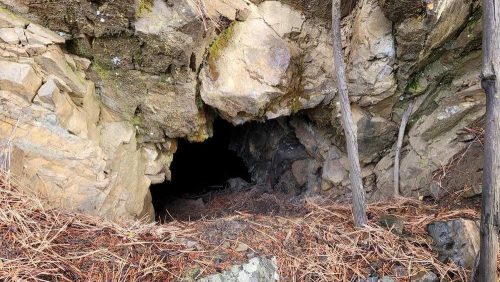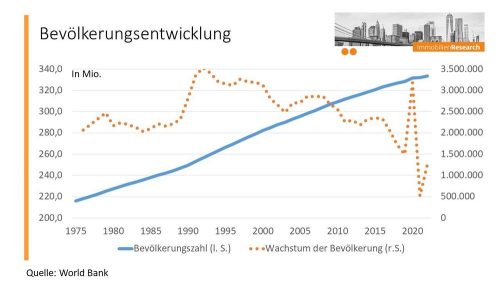Aztec Summarizes 2022 Drill Results from Cervantes Project, Sonora, Mexico
Every 2022 drill hole, except one, of the 29 drill holes successfully completed out of 31 attempted in 2022 at the California and the adjoining California Norte targets has intersected near surface, oxidized gold mineralization with minor copper values. The 2022 drilling exploration program has expanded the footprint and the depth of the California target mineralization and alteration associated with the California porphyry intrusive complex with continued intercepts of broad gold mineralization.
The identified California target area drilled has been enlarged to approximately 900 meters long E – W by 730 meters wide N-S, and exploration drilling successfully expanded the primary California zone to an area now measuring approximately 900 meters long E-W by 250 to 500 meters wide N-S, with demonstrated, continuous mineralization of up to 170 meters depth. The porphyry gold-copper mineralization is still open in all directions with anomalous mineralization and alteration up to 265 meters depth vertically. The California and California Norte targets appear to be merging from drilling and surface exposures.
The drill holes were mainly placed in step-out rows subparallel to the 2017-2018 drilling, oriented with azimuths 230 – 260, inclined at minus 65 degrees from horizontal. The rows were spaced approximately 50 m to 100 m apart and along the rows the collar spacings were 70 m to 150 m. There were four near vertical drill holes and three drill holes with azimuth perpendicular to the pattern that were made to test that there is no drill pattern bias in results.
Drilling has also intercepted broad alteration and strongly oxidized, argillically altered, and brecciated siltstone-quartzite sediments in the Jasper Copper target step out 600 meters west of the California Zone. The Jasper Copper target is in its early stages of exploration. It has limited outcrops of its brecciated, argillically altered, strong oxide mineralized siliciclastic sediments. Strong copper oxide mineralization is found on outcrops and in the drilling. Sulfides have not yet been found in drilling to 209 m depth, suggesting the there is a possibility to encounter a secondary sulfide enrichment blanket.
At the Purisima Este target drilling found anomalous Au and multi-element mineralization related to the edges of its diatreme-breccia pipe related to a Qfp intrusive and follow-up work is planned.
View: California Zone Longitudinal Section and California Zone Drill Progress Map
2022 Drill Highlights:
- 94m @ 1.04 gpT Au incl 15.2m @ 3.96 gpT Au, 55m @ 0.36% copper in CAL22-001
- 165m @ 1.00 gpT Au incl 24.4m @ 4.25 gpT Au, 160m @ 0.065% copper in CAL22-004
- 137m @ 1.49 gpT Au incl 51.7m @ 3.42 gpT Au, 119m @ 0.091% copper in CAL22-005
- 100m @ 0.75 gpT Au incl 9.14m @ 3.087 gpT Au, 138m @ 0.10% copper in CAL22-006
- 152m @ 0.87 gpT Au, incl 33.5m @ 2.05 gpT Au, 123m @ 0.095% copper in CAL22-012
- 120m @ 0.677 gpT Au, incl 27 m @ 1.456 gpT Au in CAL22-027
- 135 m @ 0.56 gpT Au, incl 12.0 m @ 2.297 gpT Au in CAL22-031
Drilling has also expanded the footprint of the known extents of the mineralized and phyllically altered California porphyry intrusive complex, demonstrating alteration zoning from east to west of argillic to phyllic alteration, multiple stockwork veining and hydrothermal brecciation types and stages, and confirmed the prior IP survey conductivity anomaly was related to disseminated sulfides. The core drilling program has shown that Au mineralization is limited by the enveloping argillc alteration and seems to prefer to be close to the argillic/phyllic alteration boundaries.
The gold mineralization is strongly associated with copper, arsenic, silver, bismuth and tungsten, while molybdenum anomalies are as haloes distal and interior to the gold, antimony is distal, mercury is usually undetectable, lead and zinc are mainly distal, and barite has a wide distribution.
The controls on mineralization/zoning are still to be identified; however, the Qfp and Hydrothermal breccia units (Hbx) are the seemingly the preferred hosts. The Qfp, hydrothermal breccias and gold mineralization may be dipping to the north into the California Norte target. The gold mineralization appears to be widely distributed in disseminations, fractures and veinlets at high levels within in a Quartz-feldspar porphyry intrusive complex and related hydrothermal breccias.
The primary focus of the 2022 drilling program at Cervantes was to expand the previously drilled California target, California North and Jasper targets, to enhance geologic understanding of the targets, and to collect a sample for metallurgical testing. The oriented core drilling program in 2022 tested step-outs of 35 to 450 meters using varying azimuths and inclinations. The combined 2022 drilling totaled 37 drill holes and 7,836.6 m on four targets (California, California Norte, Purisima East and Jasper) The 2022 drilling program was conducted in part during the rainy season, and for the entire program there were no injuries or accidents.
The following is a summary tabulation of all 2022 RC and Core drill hole results:
Drill samples are collected every 1.52 m from RC chips and every 1.5m from sawing the core drill holes. The samples are analyzed by Bureau Veritas for gold with a 30-gram sample size using the method FA430 followed by MA300. Over limits, when present, are analyzed by AR404 or FA550. All holes contain certified blanks, standards, and duplicates as part of the quality control program. The QA/QC has delivered excellent results to date good data integrity. The samples are shipped to and received by Bureau Veritas Minerals laboratory for the gold and multielement geochemical analysis and additional gold results will be received and reported in the next several weeks. The QAQC for the drilling programs has been evaluated and found to have good results.
Now that drilling has concluded and the dry season has started, Aztec in early 2023 will next carry out channel sampling and geologic mapping of the new drill roads at California, California Norte and Jasper, as well as to expand surface sampling and mapping on the property in general to continue the 2021 – 2022 surface exploration program.
Cervantes Project Overview
Cervantes is a highly prospective porphyry gold-copper project located in southeastern Sonora state, Mexico. The project lies 160 km east of Hermosillo, Sonora, Mexico within the prolific Laramide porphyry copper belt approximately 265 km southeast of the Cananea porphyry copper-molybdenum mine (Grupo Mexico). Cervantes also lies along an east-west trending gold belt 60 km west of the Mulatos epithermal gold mine (Alamos Gold), 35 km northeast of the Osisko San Antonio gold mine, 45 km west of the La India mine (Agnico Eagle), and 40 km northwest of Santana gold deposit (Minera Alamos). View: Cervantes Project Location Map
Cervantes Project Highlights
- Large well-located property (3,649 hectares) with good infrastructure, road access, local town, all private land, water wells on property, grid power nearby
- Seven prospective mineralized zones related to high level porphyries and breccias along a 7.0km east-northeast corridor with multiple intersecting northwest structures
- Distinct geophysical anomalies, California target marked by high magnetic and low resistivity anomalies, high radiometric and chargeability anomalies responding to pervasive alteration
- Extensive gold mineralization at California zone, 118 soil samples average 0.44 gpt gold over 900 m by 600 m area, trench rock-channel samples up to 0.47 gpt gold over 222 m
- Already drilled the first discovery holes at the California zone, intersected gold oxide cap to a classic gold-copper porphyry system, drill results up to 1.49 gpt gold over 137 m and 1.00 gpT gold over 165m
- Excellent gold recoveries from preliminary metallurgical tests on drill core from California zone; oxide gold recoveries in bottle roll tests range from 75% to 87%
- California geophysical anomaly wide open laterally and at depth, IP chargeability strengthens and broadens to >500m depth over an area 1100 m by 1200 m, and has been confirmed by exploration drilling
- Three-Dimensional IP Survey conducted in 2019 extends strong chargeability anomalies to the southwest covering Estrella, Purisima East, and Purisima West, coinciding well with alteration and Au-Cu-Mo soil geochemical anomalies
California Target
In 2017-18, Aztec completed a Phase 1, 17 diamond core hole drill program, totaling 2,675 meters (m) (see news release dated June 26, 2018). Phase 1 drilling tested the California target 900m by 600m gold-in-soils anomaly that averaged 0.44gpt covering hydrothermal breccias within a Quartz feldspar porphyry stock intruding Paleozoic siliciclastic sediments.
In early 2022, Aztec completed a Phase 2, 26-hole, RC (reverse circulation) drill program totaling 5,267 m focused on expanding the California zone with two drill hole fences parallel to and on either side of the 2017-18 Phase 1 drill hole fence. The Phase 2 RC drilling program successfully expanded the primary California zone to area now measuring approximately 900 meters long by 250 to 500 meters wide, with demonstrated mineralization up to 170 meters depth vertically.
The porphyry gold-copper mineralization is still open in all directions. Aztec’s drilling to-date has consistently intersected an oxidized gold cap to a porphyry-type gold-copper-silver system at California, including multiple 100+ meter widths of exceeding 0.40 gpt gold.
Highlights of the 2017-18 Phase 1 diamond core and 2021-22 Phase 2 RC (see news release dated June 14, 2022) drill programs are as follows:
- 137m @ 1.49 gpT Au incl 51.7m @ 3.42 gpT Au, 119m @ 0.091% copper in CAL22-005
- 165m @ 1.00 gpT Au incl 24.4m @ 4.25 gpT Au, 160m @ 0.065% copper in CAL22-004
- 152m @ 0.87 gpT Au, incl 33.5m @ 2.05 gpT Au, 123m @ 0.095% copper in CAL22-012
- 160m @ 0.77 gpT gold incl 80m @ 1.04 gpT gold, 0.11% copper in 18CER010
- 139m @ 0.71 gpT gold incl 20m @ 2.10 gpT gold, 0.16% copper in 17CER005
- 94m @ 1.04 gpT Au incl 15.2m @ 3.96 gpT Au, 55m @ 0.36% copper in CAL22-001
- 118m @ 0.63 gpT gold incl 43m @ 1.18 gpT gold, 0.16% copper in 17CER003
- 100m @ 0.75 gpT Au incl 9.14m @ 3.087 gpT Au, 138m @ 0.10% copper in CAL22-006
- 122m @ 0.60 gpT gold incl 62m @ 0.88 gpT gold, 0.06% copper in 18CER007
- 170m @ 0.42 gpT gold incl 32m @ 0.87 gpT gold, 0.06% copper in 18CER006
Preliminary metallurgical tests on California drill cores were conducted in 2019 (see news release dated March 12, 2019). Drill core samples were grouped into 4 separate types of mineralization: Oxide 1, Oxide 2, Mixed Oxide/Sulfide and Sulfide. The preliminary results of bottle roll tests showed excellent potential for heap leach gold recovery, as follows:
- 85.1% recovery on 2.0mm material and 94.3% on 75-micron material in sample Oxide 1
- 87.7% recovery on 2.0mm material and 94.2% on 75-micron material in sample Oxide 2
- 77.9% recovery on 2.0mm material and 89.0% on 75-micron material in sample Mixed Oxide/Sulphide
- 51.2% recovery on 2.0mm material and 78.7% on 75-micron material in sample Sulphide
Additional Targets
Purisima East – outcropping gossans, altered and mineralized diatreme breccias and porphyry intrusions marked by a 700m by 600m geochemical soil anomaly in 193 samples that average 0.25 gpt gold, a small historic ‘glory hole’ mine where rock chip sampling returned high-grade mineralization up to 44.6 gpt gold.
Estrella – outcrops of gossan and sulfides in silicified Paleozoic sediments near quartz porphyry dikes with rock chip samples up to 3.9 gpt gold and 2,010ppm copper.
Purisima West – a mirror image of Purisima East in size and type of gossans, altered and mineralized breccias and intrusions in association with gold and copper soil anomalies.
Jasper – 2017 trenching returned skarn/replacement-type mineralization up to 0.52% copper and 0.62 gpt gold over a 92.4 m length. In 2022 RC drilling found a broad zone of copper – gold mineralization in JAS22-001.
California North – coincident IP chargeability and gold-copper-molybdenum soil geochemical anomalies with demonstrated gold – copper mineralization by RC drilling, it may be a north extension of the California target
Other targets – porphyry alteration and geochemical soil anomalies mark the Jacobo and Brasil prospects but more work is required to expand and define these targets
Allen David Heyl, B.Sc., CPG., VP Exploration of Aztec, is the Qualified Person under NI43-101, supervised the Cervantes exploration program. Mr. Heyl has reviewed and approved the technical disclosures in this news release.
“Simon Dyakowski”
Simon Dyakowski, Chief Executive Officer
Aztec Minerals Corp.
About Aztec Minerals – Aztec is a mineral exploration company focused on two emerging discoveries in North America. The Cervantes project is an emerging porphyry gold-copper discovery in Sonora, Mexico. The Tombstone project is an emerging gold-silver discovery with high grade CRD silver-lead-zinc potential in southern Arizona. Aztec’s shares trade on the TSX-V stock exchange (symbol AZT) and on the OTCQB (symbol AZZTF).
Contact Information – For more information, please contact:
Simon Dyakowski, President & CEO, Director
Tel: (604) 619-7469
Fax: (604) 685-9744
Email: simon@aztecminerals.com
Website: www.aztecminerals.com
Swiss Resource Capital AG
Poststrasse 1
CH9100 Herisau
Telefon: +41 (71) 354-8501
Telefax: +41 (71) 560-4271
http://www.resource-capital.ch
CEO
Telefon: +41 (71) 3548501
E-Mail: js@resource-capital.ch
![]()




